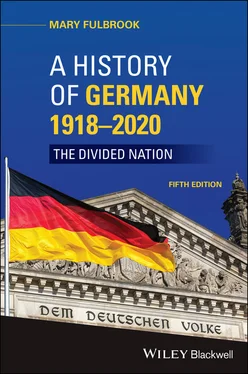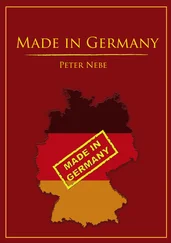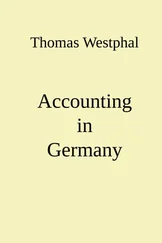229 213
230 214
231 215
232 216
233 217
234 218
235 219
236 220
237 221
238 222
239 223
240 224
241 225
242 226
243 227
244 228
245 229
246 230
247 231
248 232
249 233
250 234
251 235
252 236
253 237
254 238
255 239
256 240
257 241
258 242
259 243
260 244
261 245
262 246
263 247
264 248
265 249
266 250
267 251
268 252
269 253
270 254
271 255
272 256
273 257
274 258
275 259
276 260
277 261
278 262
279 263
280 264
281 265
282 266
283 267
284 268
285 269
286 270
287 271
288 272
289 273
290 274
291 275
292 276
293 277
294 278
295 279
296 280
297 281
298 282
299 283
300 284
301 285
302 286
303 287
304 288
305 289
306 290
307 291
308 292
309 293
310 294
311 295
312 296
313 297
314 298
315 299
316 300
317 301
318 302
319 303
320 304
321 305
322 306
323 307
324 308
325 309
326 310
327 311
328 312
329 313
330 314
331 315
332 316
333 317
334 318
335 319
336 320
337 321
338 322
339 323
340 324
341 325
342 326
343 327
344 328
345 329
346 330
347 331
348 332
349 333
350 334
351 335
352 336
353 337
354 338
355 339
356 340
357 341
358 342
359 343
360 344
361 345
362 346
363 347
364 348
365 349
366 350
367 351
368 352
369 353
370 354
371 355
372 356
373 357
374 358
375 359
376 360
377 361
378 362
379 363
380 364
381 365
382 366
383 367
384 368
385 369
386 370
387 371
388 372
389 373
390 374
391 375
392 376
393 377
394 378
395 379
396 380
397 381
398 382
399 383
400 384
401 385
402 386
403 387
404 388
405 389
406 390
407 391
408 392
1 Unemployed dock workers in January 1931
2 Members of the Nazi League of German Girls (BDM) walk proudly down the street of a German town
3 Hitler’s triumphal arrival to popular acclaim in his former home town of Linz during the 1938 Anschluss of Austria (which subsequently represented itself as ‘Hitler’s first victim’)
4 German soldiers execute ‘partisans’, Lithuania, 1944
5 Jews in the Warsaw Ghetto, who, if they survived the misery, hunger and sickness of ghetto life, would ultimately be transported and murdered in an extermination camp
6 The Brandenburg Gate in Berlin, in a landscape of rubble at the end of the Second World War
7 West German chancellor Konrad Adenauer looks uncomfortable on a visit to Berlin’s Brandenburg Gate, in August 1961, a week after the Berlin Wall was erected
8 Schoolchildren on their weekly ‘day in industry’ in the ‘people’s own factory’, with which their school is twinned, admire the progress board in the ‘competition for fulfilment of the plan’
9 Erich Honecker handing over the one millionth new apartment built in the GDR, surrounded by workers in hard hats, and children from a local creche
10 Couple watching television, Er magazine cover, 1952
11 East Berliners hack out mementoes from the now defunct Berlin Wall, in spring 1990
12 Demonstration against rising rents and gentrification, Kreuzberg, Berlin, June 2013
13 ‘Stolpersteine’ – pavement ‘cobblestones to stumble over’, commemorating former Jewish inhabitants who were deported and murdered by the Nazis
14 The Memorial to the Murdered Jews of Europe, in the heart of Berlin, spreading over several acres between the Brandenburg Gate and the site of Hitler’s bunker and providing an inescapable and controversial reminder of the Jewish victims of Nazism
15 CDU poster ‘Wir haben mehr zu bieten’ (‘We have more to offer’) showing CDU candidates Vera Lengsfeld (formerly Vera Wollenberger) and Angela Merkel
2.1 The Versailles settlement, 1919
3.1 The electoral performance of the NSDAP, 1924–1932
4.1 The Reichstag elections, 5 March 1933
4.2 Territorial annexation, 1935–1939
5.1 The partition of Poland, 1939
5.2 Hitler’s empire by autumn 1942
5.3 Major concentration camps, including extermination centres
5.4 Proportions of Europe’s Jewish population murdered in the Final Solution
6.1 The division of Germany after 1945
13.1 United Germany, 1990
Preface to the Fifth Edition
I have amended and added to the text for this expanded fifth edition in a number of ways. In particular, the analysis of the Berlin Republic has been extended to the end of August 2020; the section on the Holocaust has been amended in light of an ever-expanding historiography that has significantly enhanced knowledge and understanding; and there have been minor revisions to content and analysis throughout the text, more in some chapters than others. As before, I have resisted the temptation to engage in radical alterations of style and argument that would have turned it into a substantially different book. However, aware that in some areas debates and approaches have moved on considerably, I have updated by light rewriting where relevant. A few additions and alterations have also been made to what remains a highly select bibliography at the end; this is not intended to be comprehensive but merely to provide some starting points and suggestions for readers wishing to explore particular periods and topics in greater depth.
Preface to the Fourth Edition
The fourth edition includes substantially updated material for Chapter 14on the Berlin Republic, as well as a number of amendments throughout the text, reflecting the changing emphases of the historiography over recent years. I have again decided against major restructuring and rewriting, although in many areas, if I were to start afresh, it would be a substantially different book. I would like in particular to thank the following for their helpful written comments on the previous edition, particularly relating to references to Poland throughout the work: Professor Daria Nałe¸cz of the Polish Academy of Sciences, Lazarski University; Professor Marek Wierzbicki of the Catholic University of Lublin; and Marcin Wodzin´ski of the University of Wrocław; as well as other participants in a meeting on ‘Recovering Forgotten History’ which took place in Warsaw in 2011.I would also like to thank the anonymous readers for Blackwell for their various suggestions regarding the whole text, and Carl for his characteristically perceptive and intelligent comments on aspects of Weimar culture.
Preface to the Third Edition
In making revisions for the third edition, I have added a separate chapter on Germany since unification, and have substantially updated the bibliography. In some sections of the book, I have also amended the text where I felt that there were significant omissions, or where the historiography has moved on so much that my previous remarks could not be left untouched. In making revisions, however, I have again had to resist the temptation to write a substantially new book, and have left the original lines of argument and organization intact.
Читать дальше












